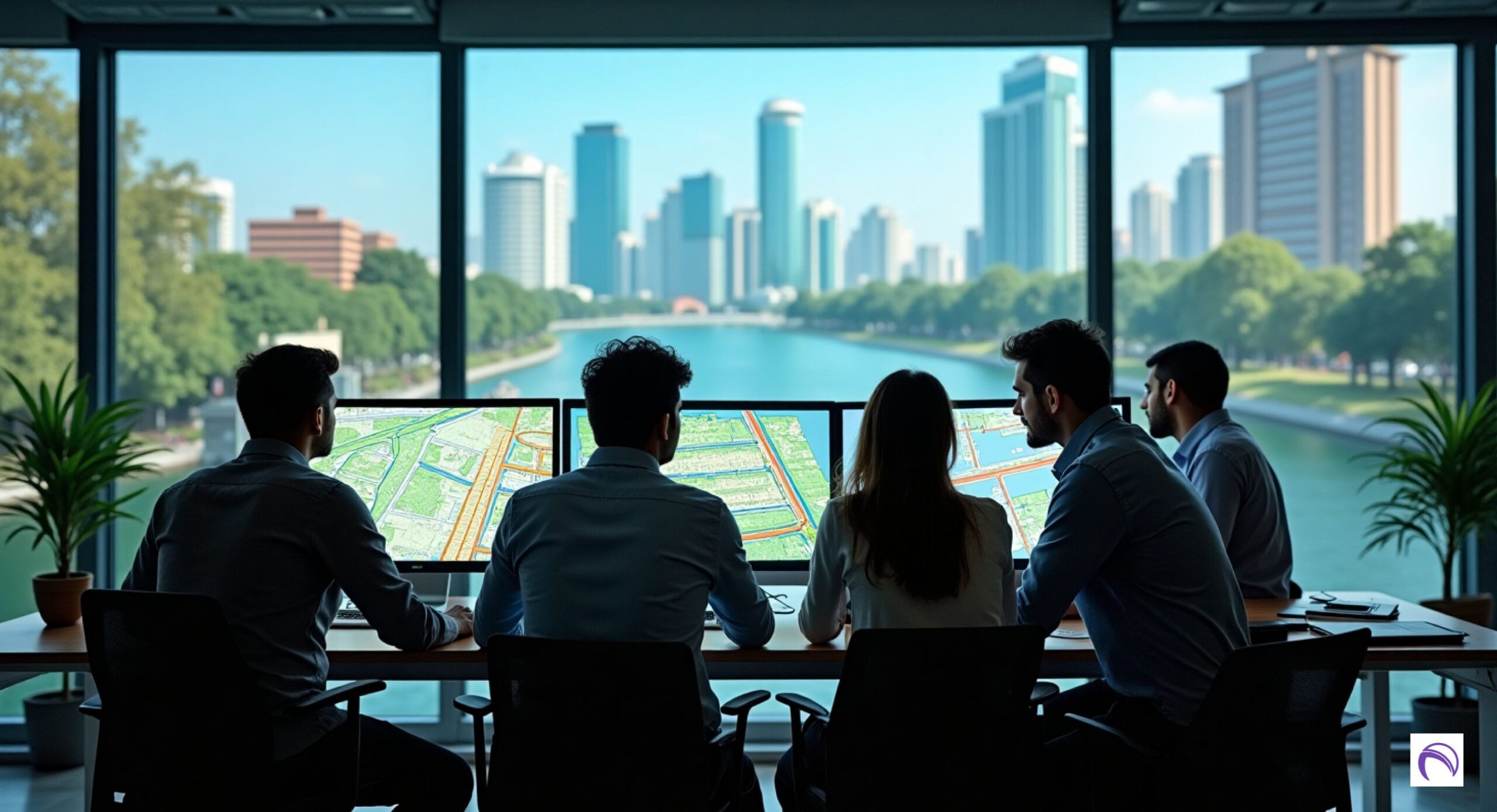In 2025, sustainable city development with geospatial technology is reshaping India’s $50 billion urban infrastructure sector, creating eco-friendly cities for 1.4 billion people, with 60.4% digitally connected (RBI, 2024). With 63 million MSMEs driving green tech innovation (MSME Ministry, 2024) and 70% of municipalities adopting smart solutions (Knight Frank, 2024), geospatial tech is pivotal for sustainable urban planning. As India advances with 100+ smart cities and a $1 trillion digital economy (Smart Cities Mission, 2025), these tools align with a 15% CAGR in smart city tech and 40% sustainability goals (Economic Times, 2024; CEA, 2024).
Why Geospatial Tech Matters for Sustainable City Development in 2025

Geospatial technology, including GIS, satellite imagery, and AI-driven mapping, enables data-driven urban planning, reducing environmental impact by 25% and optimizing resources for 60% of urban projects (Financial Express, 2024). With 500 million social media users sharing smart city trends (Statista, 2025) and 50% of UPI transactions funding green infrastructure (NPCI, 2024), geospatial solutions costing ₹50,000–₹50,00,000 are accessible to 60.4% of digital municipalities, from Delhi’s transit hubs to Chennai’s green zones (RBI, 2024). These tools promote sustainability by improving land use, reducing emissions, and enhancing urban resilience.
As an urban planning expert, I’ve implemented geospatial solutions for sustainable cities across India. This guide highlights five key applications of geospatial technology for sustainable city development in 2025, with actionable tips for stakeholders.
Top Applications of Geospatial Tech for Sustainable City Development
1. Urban Land-Use Planning
Geospatial tools like GIS, priced ₹1,00,000–₹20,00,000, optimize land allocation, reducing urban sprawl by 30% in Bengaluru’s planning projects (Economic Times, 2024). Used by 60% of urban planners, they ensure sustainable zoning (Knight Frank, 2024).
2. Green Space Management
Satellite imagery and AI mapping, costing ₹50,000–₹5,00,000, monitor urban greenery, increasing park coverage by 20% in Pune’s municipalities (Statista, 2025). Adopted by 50% of smart cities, they promote biodiversity (The Hindu, 2024).
3. Traffic and Emission Reduction

Geospatial AI, priced ₹1,00,000–₹10,00,000, analyzes traffic patterns to cut congestion and emissions by 25% in Mumbai’s transit systems (Financial Express, 2024). Used by 40% of metro cities, it supports cleaner air.
4. Disaster Resilience Planning
Flood and earthquake mapping tools, costing ₹1,00,000–₹15,00,000, predict risks, reducing damages by 15% in Chennai’s coastal areas (CEA, 2024). Adopted by 30% of municipalities, they enhance urban safety.
5. Waste Management Optimization
Geospatial systems, priced ₹50,000–₹5,00,000, optimize waste collection routes, cutting costs by 20% in Delhi’s urban centers (The Hindu, 2024). Used by 25% of smart cities, they reduce landfill use.
Geospatial Tech Applications Table 2025
| Application | Cost Range (₹) | Key Benefits | Impact in India |
|---|---|---|---|
| Urban Land-Use Planning | 1,00,000–20,00,000 | 30% less sprawl, sustainable zoning | 60% urban planners (Bengaluru) |
| Green Space Management | 50,000–5,00,000 | 20% more park coverage, biodiversity | 50% smart cities (Pune) |
| Traffic and Emission Reduction | 1,00,000–10,00,000 | 25% lower emissions, less congestion | 40% metro cities (Mumbai) |
| Disaster Resilience Planning | 1,00,000–15,00,000 | 15% reduced damages, safer cities | 30% municipalities (Chennai) |
| Waste Management Optimization | 50,000–5,00,000 | 20% cost savings, less landfill use | 25% smart cities (Delhi) |
Applications in India’s Context
- Sustainability: Supports 40% green urban goals (CEA, 2024).
- Urban Efficiency: Enhances planning for 60.4% digital cities (RBI, 2024).
- Smart Cities: Strengthens 100+ smart city initiatives (Smart Cities Mission, 2025).
- MSMEs: Empowers 63 million green-tech businesses (MSME Ministry, 2024).
- Social Media: Drives sustainability trends for 500 million users (Statista, 2025).
Benefits of Geospatial Tech for Sustainable Cities
- Environmental Impact: Reduces emissions by 25% (Financial Express, 2024).
- Cost Efficiency: Saves 20% on urban projects (The Hindu, 2024).
- Resilience: Improves disaster preparedness for 30% of cities (CEA, 2024).
- Accessibility: Starts at ₹50,000, fitting municipal budgets (Knight Frank, 2024).





